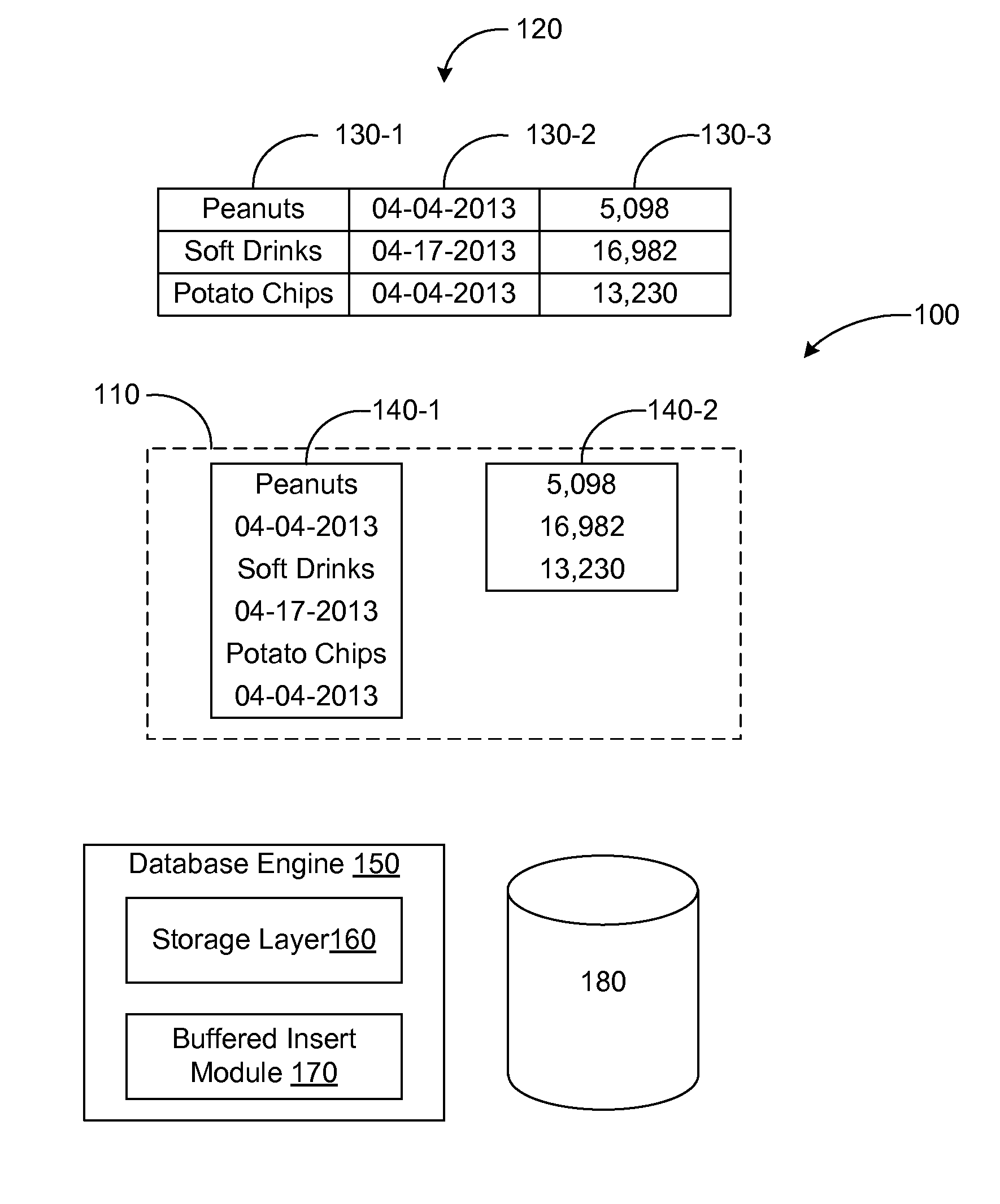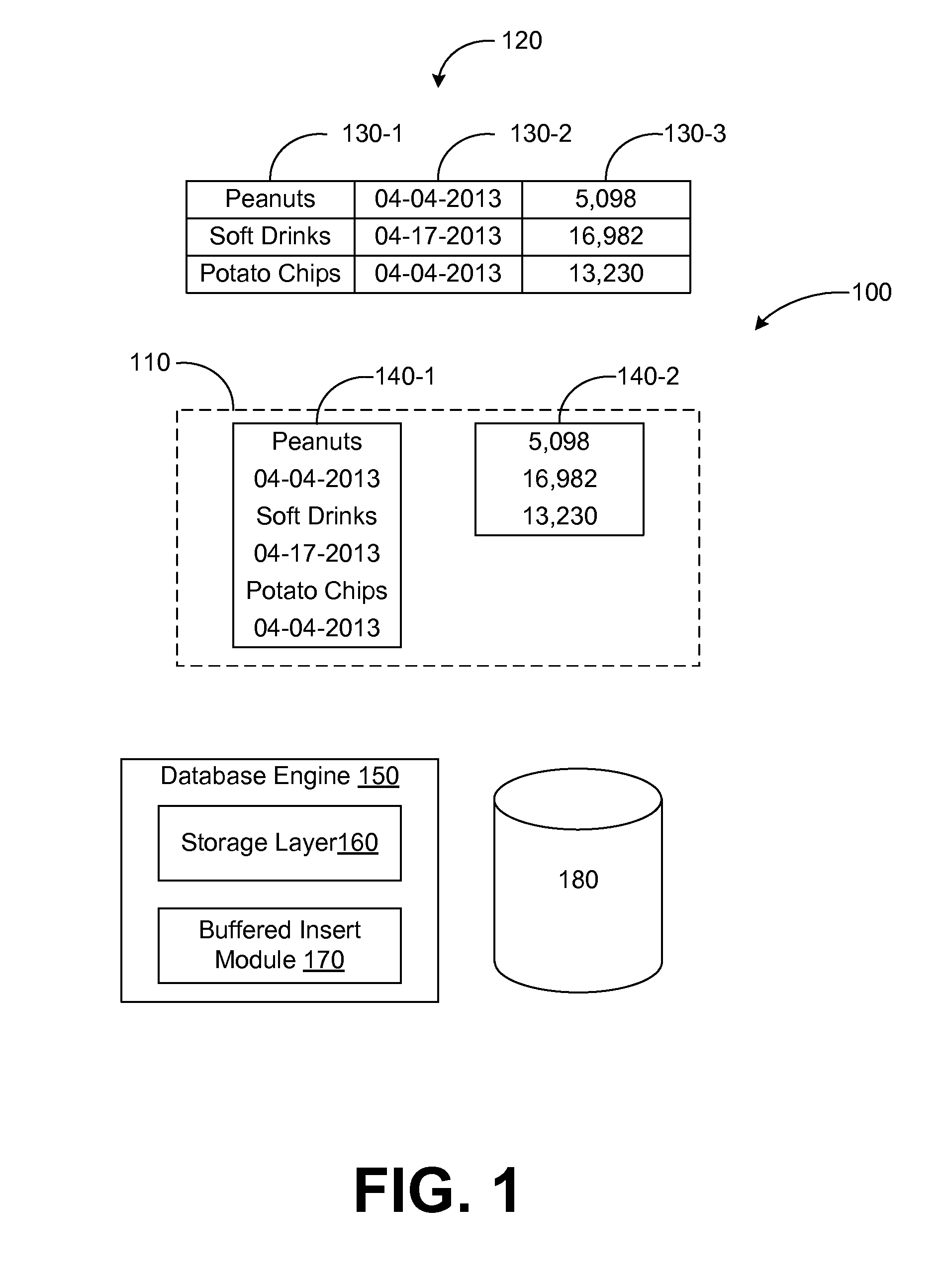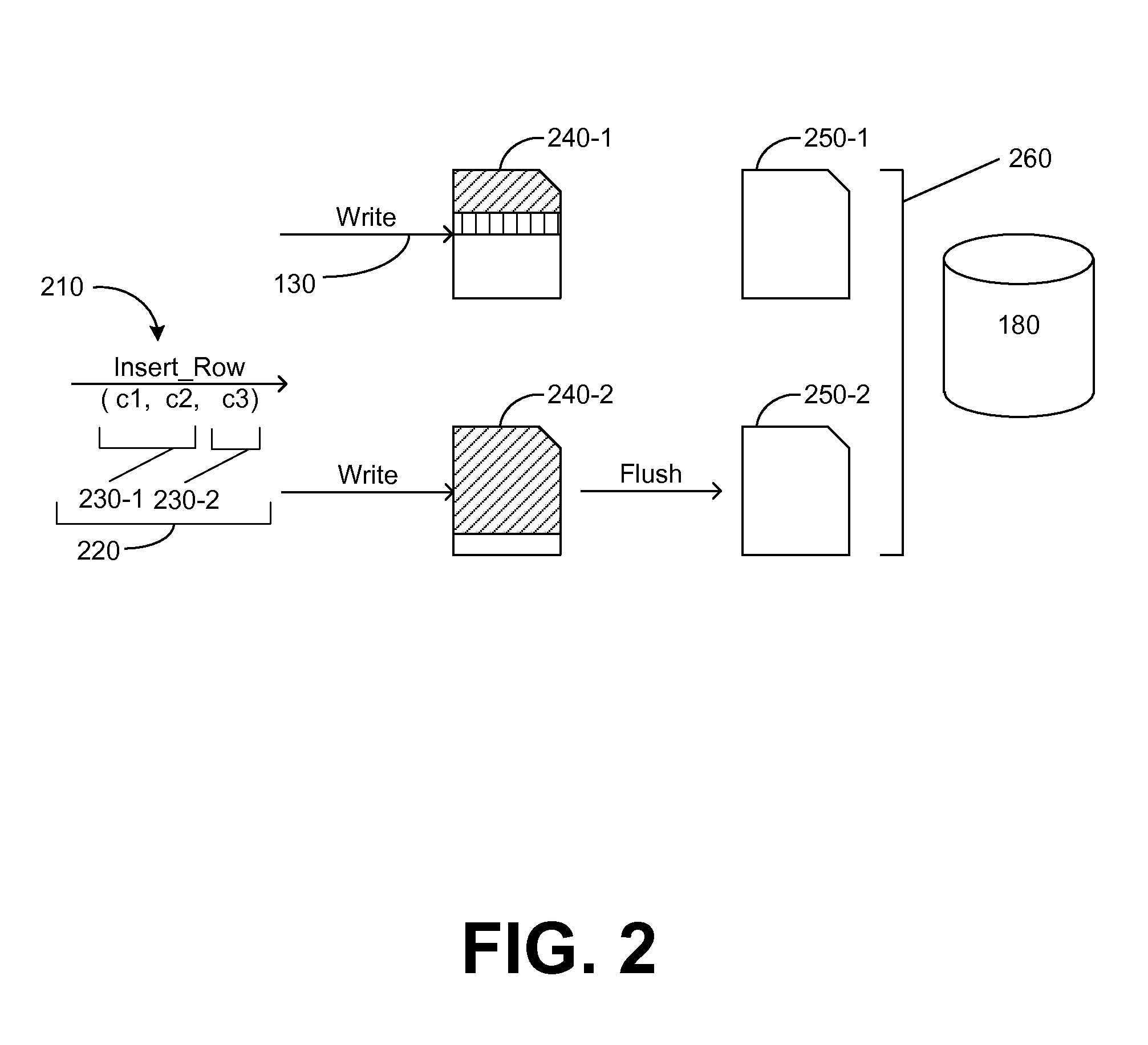Buffering inserts into a column store database
- Summary
- Abstract
- Description
- Claims
- Application Information
AI Technical Summary
Benefits of technology
Problems solved by technology
Method used
Image
Examples
Embodiment Construction
[0014]Embodiments described herein are directed to buffering techniques for database tables that are organized as column stores or column group stores. Various embodiments maintain a page-level insert buffer for each column of a column table, or each column group of a column group table. Multiple row inserts into the table are buffered, and not flushed, until a buffer is full or until another operation triggers a flush. By buffering until more than one row has been inserted, the relatively expensive flush operation is amortized across multiple rows, resulting in better overall performance as compared to contemporary implementations. Writing once for multiple row operations also reduces the amount of time that a page remains fixed or latched in the storage layer. Some embodiments also defer and accumulate the log operation(s) associated with a row insert, thus further improving performance.
[0015]Turning now to FIG. 1, a block diagram of a database system in accordance with an embodim...
PUM
 Login to view more
Login to view more Abstract
Description
Claims
Application Information
 Login to view more
Login to view more - R&D Engineer
- R&D Manager
- IP Professional
- Industry Leading Data Capabilities
- Powerful AI technology
- Patent DNA Extraction
Browse by: Latest US Patents, China's latest patents, Technical Efficacy Thesaurus, Application Domain, Technology Topic.
© 2024 PatSnap. All rights reserved.Legal|Privacy policy|Modern Slavery Act Transparency Statement|Sitemap



